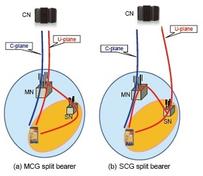LTE RRC State Diagram: IDLE and Connected Modes Explained
Advertisement
In LTE (Long-Term Evolution), the Radio Resource Control (RRC) layer is crucial for managing communication between the User Equipment (UE) and the Evolved NodeB (eNodeB), or base station. This layer handles setting up, maintaining, and releasing radio connections, as well as mobility and security.
Let’s explore the LTE RRC state diagram for UEs and understand the IDLE and Connected modes used for RRC states. The LTE RRC state diagram primarily consists of two states for the UE:
- RRC_IDLE (Idle Mode)
- RRC_CONNECTED (Connected Mode)
Each state has a distinct purpose in the communication process, and transitioning between them ensures efficient communication and battery management for the UE.
RRC State Transitions
Idle Mode <-> Connected Mode: Transitions occur when the UE needs to establish a connection (e.g., for data transmission) or when the connection is no longer needed.
RRC_CONNECTED <-> RRC_IDLE: The UE can transition back to Idle when there’s no ongoing activity to conserve resources.

In the LTE RRC state diagram, the UE transitions between RRC_IDLE and RRC_CONNECTED based on network activities. The network triggers these transitions based on factors like user data requirements, signaling activity, or power-saving needs.
- RRC_IDLE to RRC_CONNECTED: When the UE needs to transmit or receive data, it sends an RRC connection request, transitioning to the connected state.
- RRC_CONNECTED to RRC_IDLE: When the UE is no longer actively communicating, the network releases the radio resources, and the UE returns to idle mode to conserve battery power.
RRC Idle State
In RRC_IDLE, the UE isn’t actively transmitting or receiving user data, and no dedicated resources are allocated by the network. The UE still monitors the network for paging messages and system information but uses minimal power to preserve battery life.
Key functions in IDLE Mode are:
- Cell Reselection: The UE continuously monitors the signal strength of neighboring cells and switches to a better cell if necessary.
- Paging Reception: The UE listens for paging messages from the eNodeB to receive information about incoming calls, SMS, or mobile-terminated data sessions.
- Discontinuous Reception (DRX): The UE conserves power by periodically waking up to check for paging messages and remains inactive otherwise.
- Tracking Area Updates (TAU): When the UE moves between different Tracking Areas, it updates the network with its location, enabling the network to track the UE for future communications.
Benefits of IDLE Mode:
- Battery Efficiency: The UE consumes less power by entering a low-activity state.
- Network Resource Efficiency: The network doesn’t assign dedicated resources to the UE, reducing unnecessary resource usage.
RRC Connected State
In RRC_CONNECTED mode, the UE has an active connection with the eNodeB. Dedicated radio resources are allocated for data transmission and reception, enabling continuous communication.
Key functions in Connected Mode are:
- Data Transmission and Reception: The UE actively transmits and receives data, including voice calls, video streaming, and internet browsing.
- Mobility and Handover: The network manages handovers between cells as the UE moves, ensuring seamless communication without data loss or call drops.
- Measurement Reporting: The UE regularly sends measurements (e.g., signal strength) to the network to assist with handovers and resource allocation.
- Power Control: The UE and network adjust the transmission power dynamically to maintain communication quality while minimizing interference.
Benefits of Connected Mode:
- High Performance: The UE can utilize maximum available resources for fast data transmission and real-time services.
- Seamless Mobility: Continuous handover management ensures uninterrupted service, even during movement.
LTE RRC Functions
- Configuration management
- Connection Management
- Paging control
- Security management
- Broadcast
- Measurement configuration
- Measurement Reporting
- Cell selection and re-selection
- Mobility Management
Summary
- RRC_IDLE: UE saves battery and monitors network activities like paging and cell reselection.
- RRC_CONNECTED: UE actively communicates with the network, sending and receiving data, and maintaining mobility through handovers.
These two states enable efficient management of UE connectivity, balancing network performance and power consumption.
Advertisement
 RF
RF






